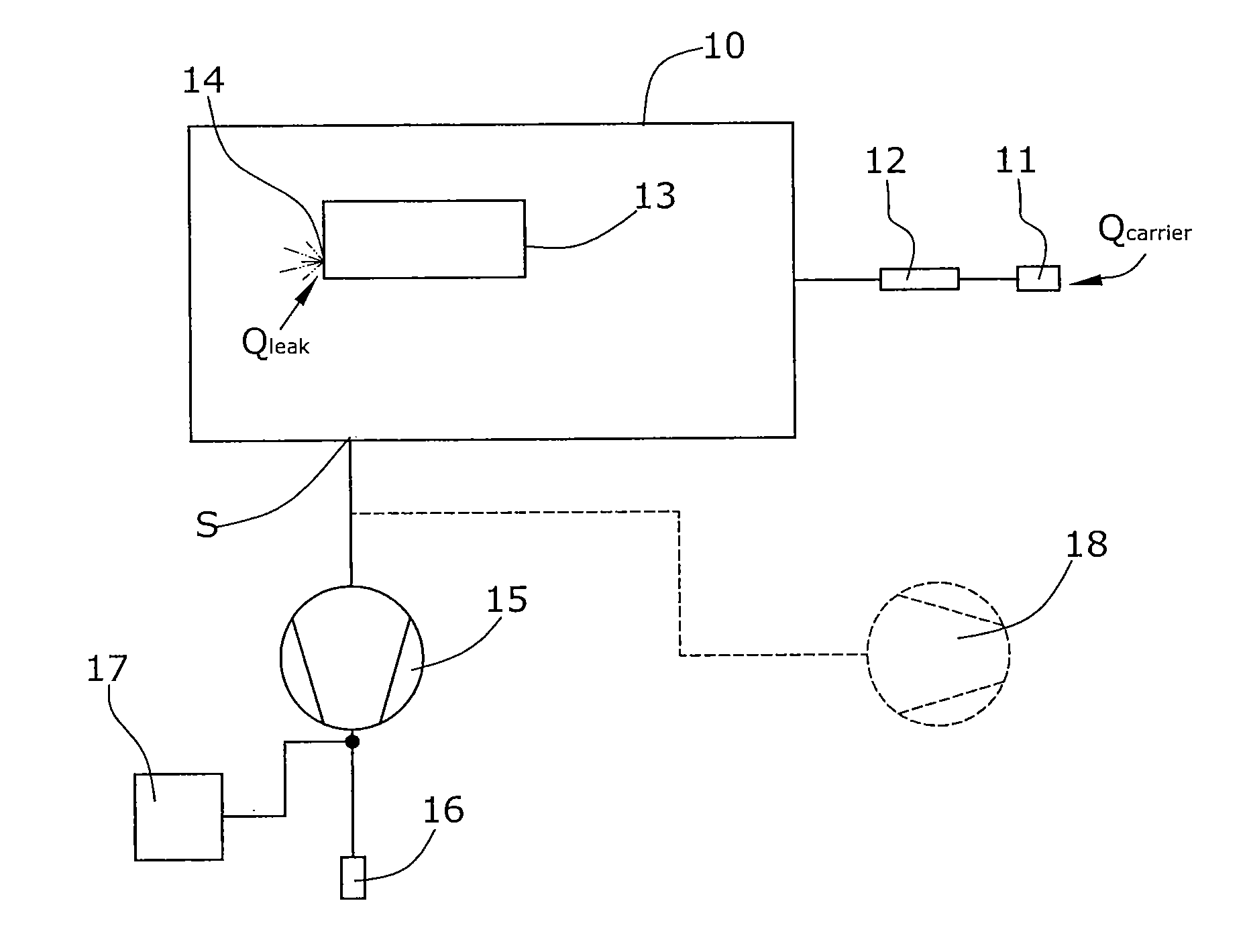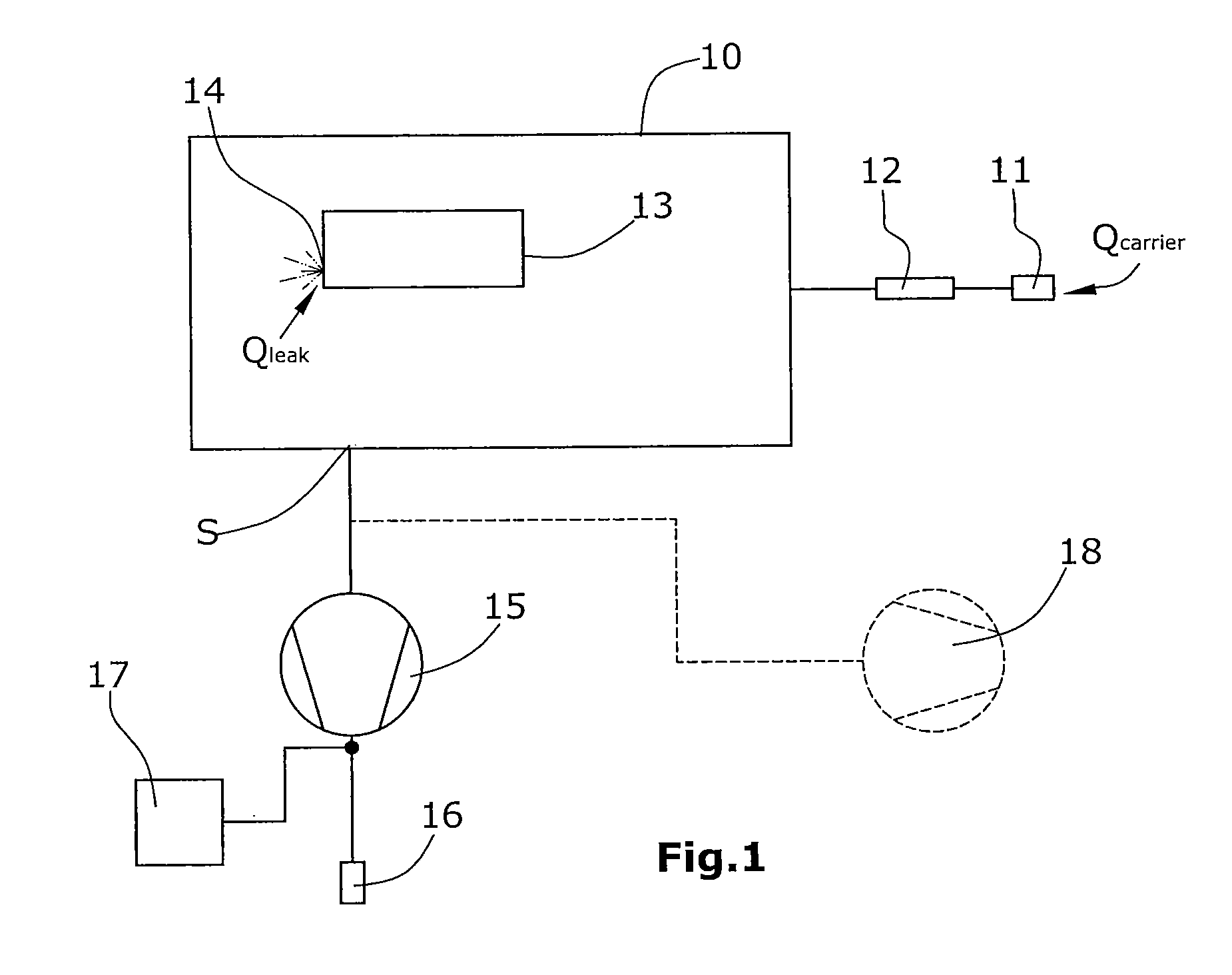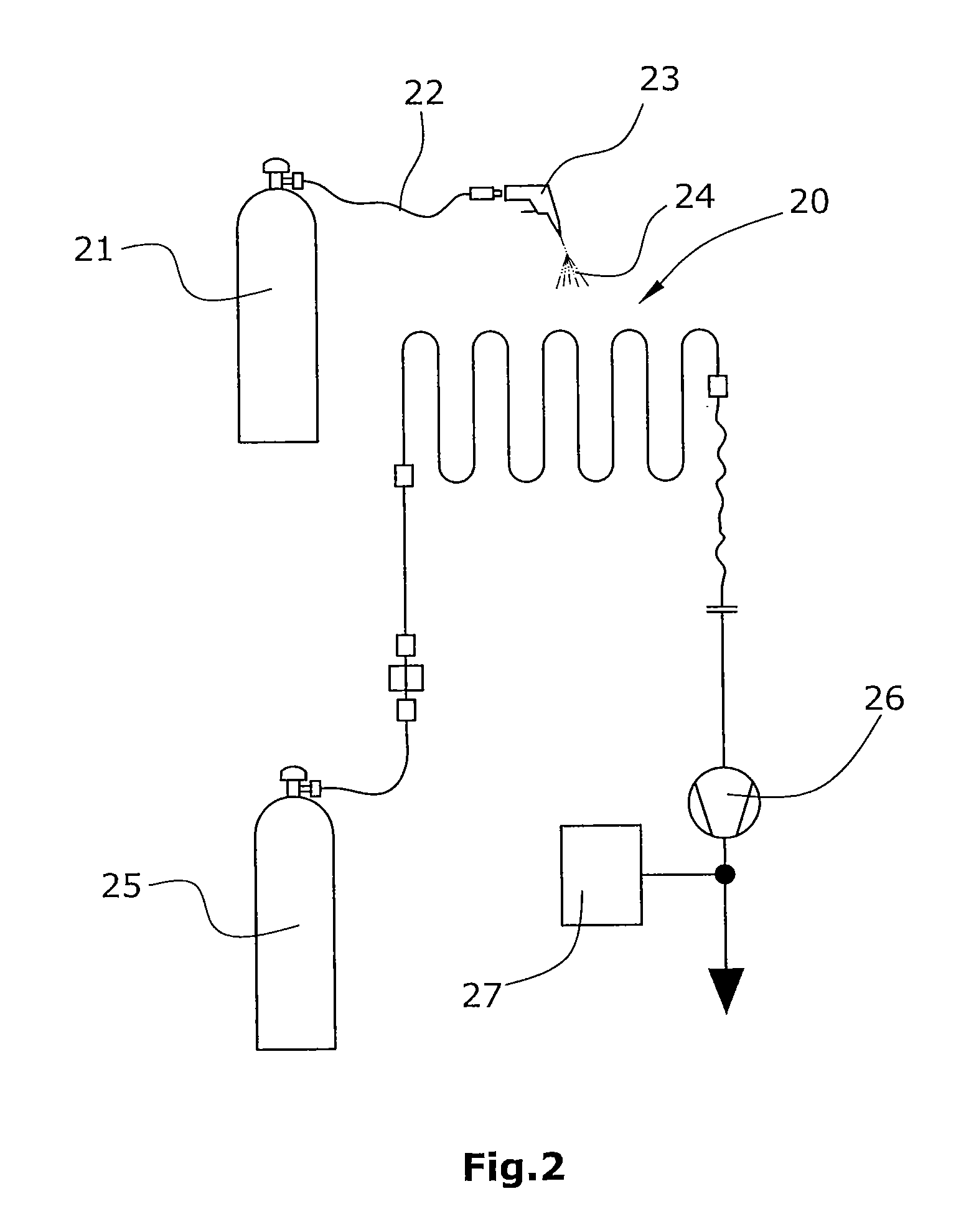Method and device for tightness testing
a technology of tightness and test-gas, which is applied in the direction of measurement devices, instruments, structural/machine measurement, etc., can solve the problems of not being able to increase the partial pressure of test-gas and simultaneously reduce the time constant, and achieve the effects of fast system reaction time, high system sensitivity, and further increase of test-gas partial pressur
- Summary
- Abstract
- Description
- Claims
- Application Information
AI Technical Summary
Benefits of technology
Problems solved by technology
Method used
Image
Examples
Embodiment Construction
[0031]In the variant of the disclosure illustrated in FIG. 1, a test chamber 10 is provided which is closed in a vacuum-tight manner.
[0032]Into said test chamber 10, a test object 13 has been inserted. The test object is a hollow body which is to be tested for leak-tightness. For this purpose, the test object 13 has been filled with a test gas, e.g. with helium. It be assumed herein that the test object 13 has a leak 14, with test gas escaping from said leak into the evacuated test chamber 10. The escaping test gas flow is Qleak.
[0033]Connected to test chamber 10 via a suction line 19 is a suctioning condenser pump 15 for removal of the gas. Said condenser pump is a compressor whose gas outlet 16 leads into the atmosphere and will supply a total pressure Ptot=1,000 bar. Suction line 19 is connected to a carrier gas inlet 11 arranged in series with a flow sensor 12. The carrier flow at carrier gas inlet 11 is marked by Qcarrier. Within suction line 19, the test gas will mix with the ...
PUM
 Login to View More
Login to View More Abstract
Description
Claims
Application Information
 Login to View More
Login to View More - R&D
- Intellectual Property
- Life Sciences
- Materials
- Tech Scout
- Unparalleled Data Quality
- Higher Quality Content
- 60% Fewer Hallucinations
Browse by: Latest US Patents, China's latest patents, Technical Efficacy Thesaurus, Application Domain, Technology Topic, Popular Technical Reports.
© 2025 PatSnap. All rights reserved.Legal|Privacy policy|Modern Slavery Act Transparency Statement|Sitemap|About US| Contact US: help@patsnap.com



